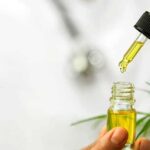Medicinal cannabis can help to resolve health issues, and be eco-positive at the same time. Heal the soil, the air, and your body.
When do we give medicinal cannabis a cape and acknowledge its superpowers?
Cannabis Can Clean Soil
Whether it’s through intensive farming or dumping and leeching of chemicals, soil contamination affects up to an estimated 80% of land. In Europe, testing showed that 80% of soil had residues of pesticide, and 58% of soil had two or more types of chemical residues.
There are a number of crops that are known as soil cleaners. These include mustard greens, willow trees, oilseed rape, and cannabis. These plants all work in a variety of ways to clean soil of:
- Pesticides
- Fertilisers
- Heavy metals
- Pollutants
The best solution to this is not causing the problem in the first place, but we know the contamination is already there. Phytoremediation is the answer.
Cannabis absorbs heavy metals and other contaminants from the soil. After Chernobyl, researchers planted hemp to absorb the radioactive isotopes in the soil surrounding the power plant. In Germany, research found that hemp can absorb cadmium, lead, and nickel from soil contaminated with sewage.
Cannabis Reduces CO2 in the Atmosphere
We all know that plants reduce the amount of CO2 by ‘sequestering’ it, essentially storing it in the soil and the plant tissue via photosynthesis. But, medicinal cannabis takes this to the next level.
- Cannabis has been shown to absorb more CO2 than any other crop, making it the perfect carbon sink
- It grows fast, requiring three to four months to mature, compared to trees that need 10-100 years
- It outgrows weeds quickly so it needs minimal human intervention
- Cannabis requires small amounts of water and no fertilisers, thriving in nutrient poor soil
Cannabis is a Great Biofuel
Hemp has a high conversion efficiency, with 97% of hemp oil being converted to biodiesel. It also can be used at a lower temperature than current biofuel options.
There are other options for biofuels, such as palm oil, corn, and sugar beet. However, hemp is a much better option:
- Corn yields four tones of dry biomass per hectare, compared to hemp’s six to seven tones
- Hemp requires less water to grow than most other crops
- Hemp replenishes the soil as it grows, unlike corn and sugar beet which strips soil of nutrients
- Cannabis has some natural ability to repel insects and soil-borne microbes and pathogens, so it needs less (or no) pesticides
- Palm oil is largely produced in tropical areas and large areas are being deforested to provide land for cultivation
- Sugar beet harvesting often removes a lot of soil from the fields
- Fuel can be created from the entire plant, including the seeds and stalk
Hemp is the New Plastic
The world needs robust, recyclable, and biodegradable packaging solutions. It’s hemp to the rescue.
- Hemp grows quickly, and has a high rate of product usability- one square kilometre can make as much paper as four to ten square km of trees, over 20 years
- 68 million trees are felled every year to make paper, hemp stops deforestation
- Hemp paper can be recycled eight times, while typical wood pulp paper can only be recycled up to three times
- It is completely biodegradable, within 40 to 80 days
- Hemp plastic is 2.5 times stronger than steel
Sadly, the price to produce hemp plastic and paper is higher than traditional products. However, this will change as production scales up.
Hemp Clothing
It’s estimated that the clothing and textile sector creates about ten percent of global carbon emissions. That is a huge percentage, and there is no excuse for fast fashion considering the harm it causes. Up to 85% of clothing ends up in landfills, and much of that will be plastic-based fabric.
- Hemp fabric is 100% biodegradable
- It’s breathable, easy to wear, and gets softer with every use
- The fabric is strong and durable, up to eight times strong than linen
- Has a long shelf life, longer than any other natural fabric
- Uses one third of the water than cotton needs to grow
It does wrinkle easily (like cotton and linen) and until production can scale up, it is a more expensive product.
Replacing Traditional Pharmaceuticals
The global pharmaceutical industry is a significant contributor to global warming. It’s more polluting than the auto industry, about 52 megatons of CO2e emitted per year.
While producing and manufacturing cannabis does produce CO2, it’s at far lower levels than other drugs. Indoor cultivation increases the impact of cannabis growth on the environment, but steps can be taken to reduce this such as:
- Using modern greenhouses that reduce energy consumption
- Harvesting rainwater to irrigate plants
- Natural pest deterrents and companion planting when possible
Can Cannabis Can Save The World?
While cannabis cannot single handedly save the world, it is certainly a better option than conventional products. While growing it, it replenishes and restores the soil, and sequesters carbon. The entire plant can be used, so while the pharma industry may only use certain parts of the plant, the rest can be used in textile or paper production. And finally, using cannabis or hemp-based products replaces existing products that are harmful or less environmentally friendly.



